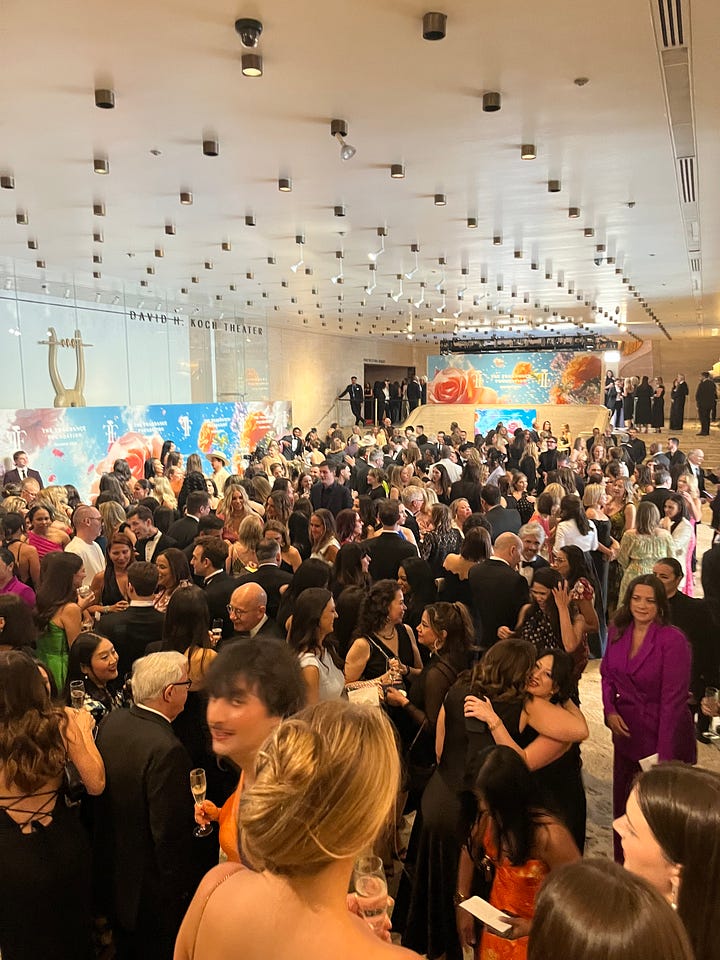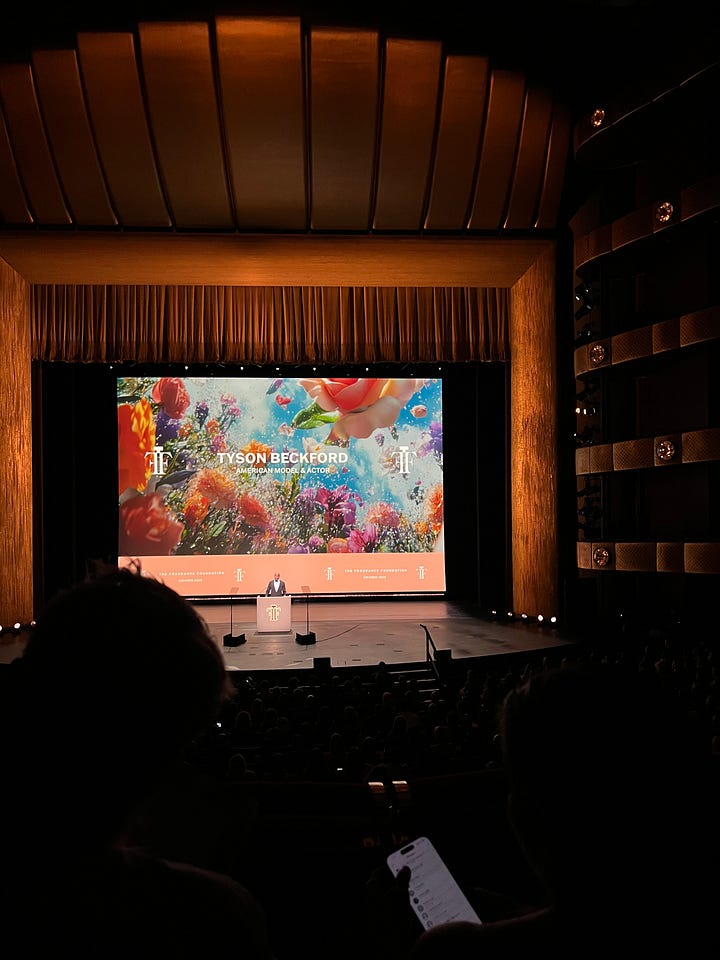Award shows are funny. One minute you’re trying to flag down a cater waiter for some fried halloumi canape, and the next minute Tyson Beckford shows up. Because you can always count on Tyson Beckford to be there.


Such was the case at the 2025 Fragrance Foundation Awards, which took place at Lincoln Center last week. Tyson Beckford was there to present a lifetime achievment award to Ralph Lauren, and other awards went to many of the usual suspects like Tom Ford and Paco Rabanne. But in addition to awarding the best fragrances in the usual categories of popular, prestige and luxury, the Fifis also introduced a new category this year: the “Ultra Luxury” fragrance of the year.
I’m not totally sure how the Fragrance Foundation defines Ultra Luxury, but I’m going to translate it to Really Expensive Perfumes. And it makes sense to include this category this year given that fragrances are getting more and more expensive, with many new releases targeting the $350 and up range. Just last month, luxury beauty retailer Violet Grey launched a perfume that retails for $1,100 per 60 ml bottle. By comparison, the nominees of the Fifi’s Ultra Luxury fragrances are a bargain.
The Fifis didn’t advertise the price of each of the nominees in the awards ceremony, but I was curious to break down the cost of each perfume by not just the dollar tag on the bottle but the price per ml. Let’s take a look.
Bottega Veneta Colpo di Sole
$450 / 100 ml = $4.50 per ml
Dolly Parton Crystal Edition
$500 / 15 ml = $33.33 per ml
Gucci The Alchemist’s Garden The Heart of Leo
$400 / 100 ml = $4 per ml
House of Bo Casa Blanca
$365 / 75 ml = $4.86 per ml
Tom Ford Black Lacquer [WINNER]
$405 / 50 ml = $8.1 per ml
Valentino Anatomy of Dreams Private Talk
$330 / 100 ml = $3.30 per ml
Dolly Parton’s Crystal Edition namesake perfume is the clear winner in terms of price to volume at over $33 a milliliter, but the winner in Tom Ford’s Black Lacquer is no slouch either at $8 a milliliter. By comparison, the winner of the popular category, Vacation’s After Sun, goes for $60 for a 30 ml bottle, or $2 per ml.
A while back I was speaking with a friend who asked me my opinion on a certain perfume brand. I said it smelled expensive, to which she asked what makes a fragrance smell expensive. To be honest, I was kind of stumped on how to break down my own description. Does “expensive” smelling just mean powerful? Long-lasting? Complex? A fancy bottle?
I haven’t smelled any of the nominees in this Ultra Luxury category, so it’s tough to say if any of them smell “expensive,” or are “worth” their price tag. But I also don’t think there is a clear answer to such a thing. A perfume is worth whatever people are willing to pay for it. That a bottle is actually “worth” what you’re being charged is impossible to say — it’s almost never the case that the juice inside the bottle is made up of high-priced ingredients like orris butter or oud that actually justify its pricetag. In addition to raw materials after all, you’re also paying for labor, for R&D, for shipping, etc. But you’re also paying for a more nebulous sense of positioning that doesn’t quite exist on a line sheet. And more than the smell itself, the trappings and presentation, the design of the bottle, the brand behind it, the store it’s sold in, are usually doing much of the heavy lifting.
The key to a luxury fragrance is that those trappings maintain the illusion, such that you never question that this is indeed as expensive of a product as it claims to be. Because even luxury trappings can fall short. The Fifi awards night itself had all the fancy trimmings you could ask for: a black tie dress code, celebrity attendance, a Lincoln Center setting. But outside the heels and tuxes are just regular crew people in jorts and sneakers milling about, beyond the pseudo red carpet are tape marks and ungainly camera stands. The actual experience is never quite as elevated from normalcy as it aims to be.
That’s not a failing of the Fifi awards, but the reality of any fancy event. And the fancier it claims to be, the bigger the gap between the luxury trappings and the reality. Hilary Mantel’s delightful essay “Royal Bodies” talks of such dissonance when the author attended well-heeled event with the then-Prince Charles.
“As we drifted away from the stage I saw something else. I glanced sideways into a room off the main hall, and saw that it was full of stacking chairs. It was a depressing, institutional, impersonal sight. I thought, Charles must see this all the time. Glance sideways, into the wings, and you see the tacky preparations for the triumphant public event. You see your beautiful suit deconstructed, the tailor’s chalk lines, the unsecured seams. You see that your life is a charade, that the scenery is cardboard, that the paint is peeling, the red carpet fraying, and if you linger you will notice the oily devotion fade from the faces of your subjects, and you will see their retreating backs as they turn up their collars and button their coats and walk away into real life.”
I am curious about many of the bottles nominated for the Ultra Luxury category. The Bottega Veneta line in particular caught my eye with their organically-shaped glass and marble bottles when they came out in 2024. Supposedly, they were created under the eye of Bottega’s creative director Matthieu Blazy, who has set the standard for keeping a stalwart heritage brand feeling fresh and stylish without capitulating to fleeting trends. No wonder he got plucked off to Chanel.
But even if I were to own one of the brand’s $450 perfumes, I imagine it would lose its sheen one day. I don’t live in a showroom after all, but a real apartment subject to the grime of daily living. It would have to live on my dresser collecting grubby fingerprints and sitting next to hair ties and tubes of chaptstick. Maybe the marble would get chipped or dinged over time. And like any perfume, the actual experience of it would ultimately be fleeting.




